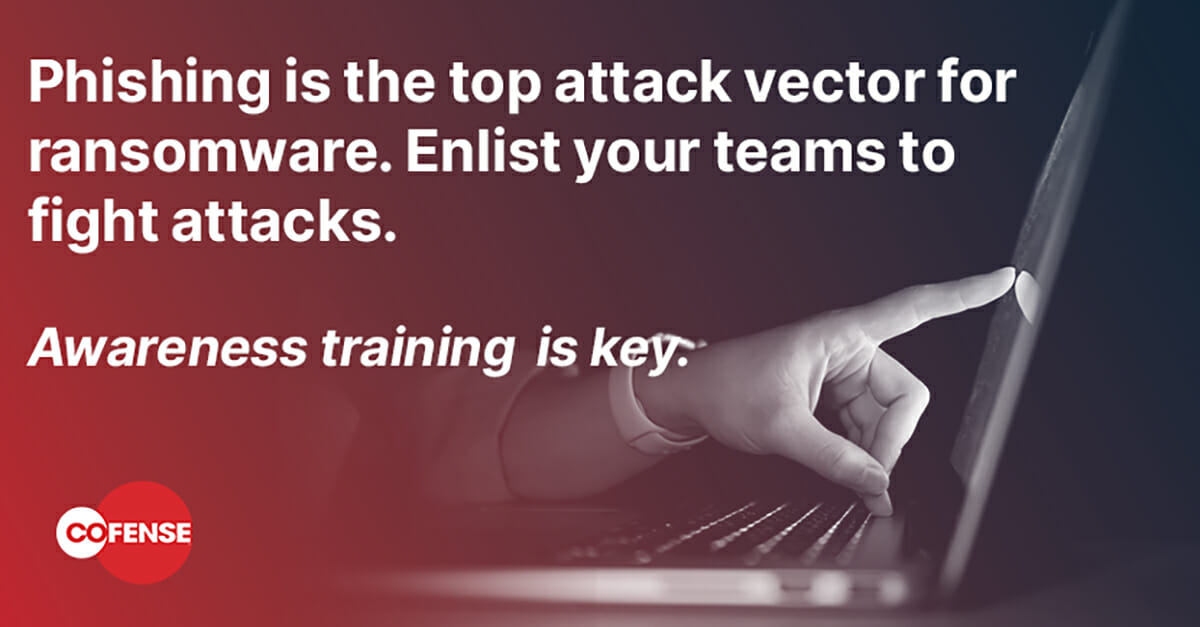Want to Know How to Protect Against Ransomware? Here are some best practices.

The fight against ransomware means harnessing every tool at the enterprise's disposal - including every single employee and organizational stakeholder. According to the Cybersecurity and Infrastructure Agency (CISA), ransomware is an ever-evolving form of malware designed to encrypt files on a device, rendering them and the systems relying on them unusable.
How to Prevent Ransomware Attacks: Best Practices
When it comes to ransomware prevention, you can dramatically sway the odds in your favor by following these best practices, compiled from our expert analysts' experience and other trusted sources. Remember, you may be the last line of defense safeguarding precious data should you spot something that seems odd in your email inbox. Because attackers know how to circumvent standard network protections, keep these tips in mind as you go through your business email.
- Use extreme caution when clicking on a link: Don't click links in messages from unknown senders or on unknown websites. If the link is malicious, an automatic download may begin, and the process may conclude with an infection that can spread from your device to the entire network.
- Don't provide personal information or login credentials: The primary pursuit of hackers using email ruses is to capture user credentials for network access. If you receive an email, call or text that prompts you for this information, don't take the bait. If you do, you open the door to cybercriminals who then have a far simpler path to infiltrate your company's systems.
- Stay away from unknown or unsolicited email attachments: Ransomware-delivering malware is often planted in attachments that may be in any number of formats. Be suspicious. Scrutinize sender information and addresses. and never open an attachment that requires macros to view. Criminals often use macros to hide and deliver malware.
- Use only trusted download sources: Never, never, never download software or files from sites you don't know well. Keep in mind that hackers often use doppelganger, or lookalike, sites and other tricks to fool you into believing you're interacting with a legitimate website. They do this for strictly nefarious purposes. Our blog post provides more information about the dangers of doppelgangers.
The Best Ransomware Protection? Your People.
We see it every day. Malware-laden email, some of which are designed to deliver ransomware, gets past standard email filters and security technology, or secure email gateways (SEGs). You can, and should, empower your employees to help you fight the criminals. Ransomware security awareness is your whole team's responsibility. Need convincing? Consider these facts:
- Ransomware is readily available
- Ransomware changes faster than detection technologies, or SEGs, can respond
- Paying the ransom - sometimes millions of dollars in cybercurrency - is often the only way to unlock hostage data and systems
- One successful attack may lead to repeat attacks, and recovered data may be compromised
- Recent successful ransom attacks only encourage more ransomware campaigns
- Comprehensive ransomware-awareness training is essential because people are the targets of phishing, the most commonly used attack vector for ransomware
Users who are trained to spot phishing attacks, detect reply-chain campaigns and report suspicious emails can be the difference between a secure organization and a ruinous network compromise. Don't give threat actors any help.
If we all work together as individual contributors against hackers, there would be far fewer successful ransomware attacks. As the Center for Internet Security points out, "From local government entities to large organizations, ransomware attacks are everywhere. It’s up to all of us to help prevent them from being successful."[1]